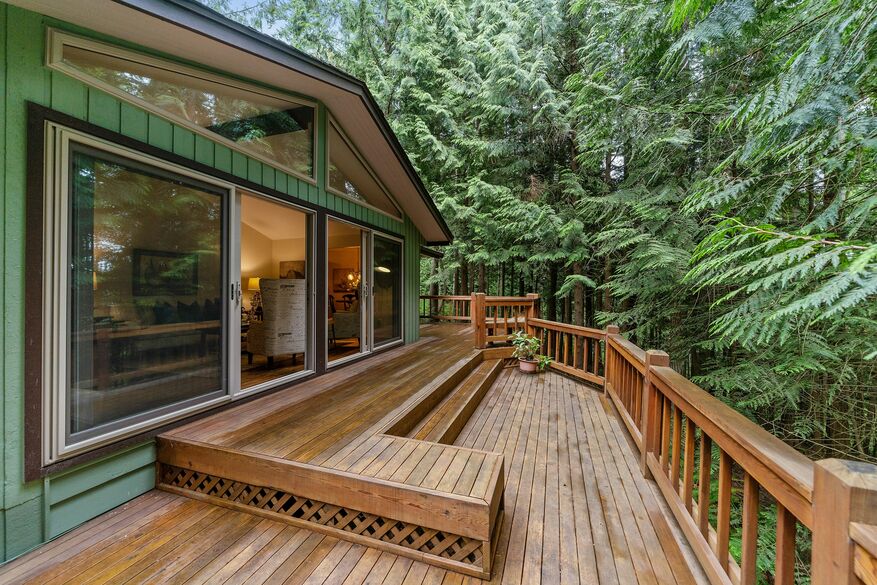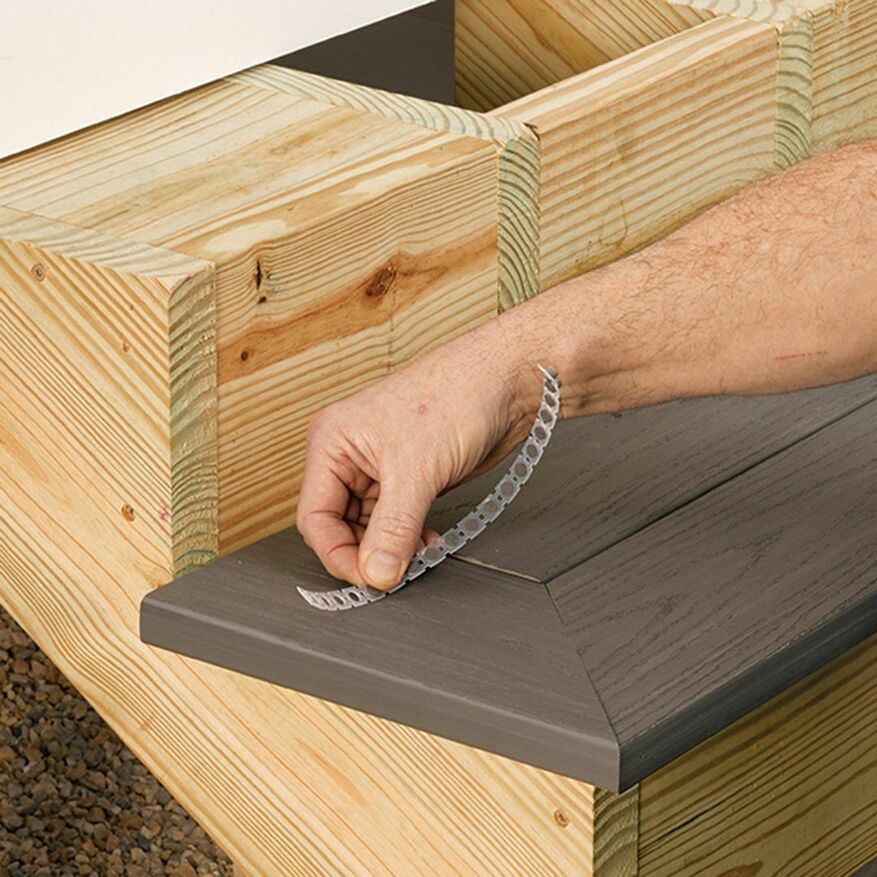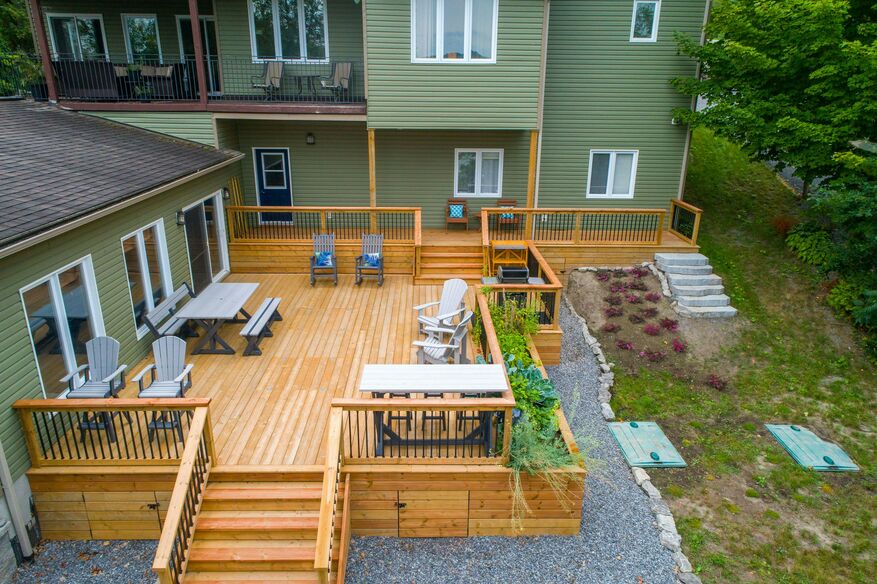As a contractor, your customers rely on you to deliver a deck that’s beautiful, functional and secure. While building an outdoor deck may seem like a simple project, there are building codes that must be followed to ensure the safety and durability of the structure.
While building codes may sometimes seem like a hassle, the structure’s safety should always come first.
Exploring and understanding the breakdown of essential safety guidelines for deck construction will help ensure your deck project stands strong and stable for years to come.
Key Building Codes for Decks
Building codes for decks exist for several key reasons, such as ensuring correct load-bearing, verifying the deck is properly attached to a home and confirming that railings and stairs are safe.
Structural Integrity Requirements
Structural integrity requirements were created to ensure that every component of a deck works to make a deck safe. It needs to be proven stable, secure and able to withstand both gravity loads and lateral loads.
The International Residential Code (IRC) structural integrity codes, published by the ICC, guide contractors on:
- Footings and Foundations
- Posts
- Beams and Girders
- Joists
- Ledger Connections
- Lateral Load Connections
- Guards and Railings
- Stairs and Handrails
- Fasteners and Connectors
Local building codes may have further stringent requirements based on the local climate.
Material Specifications
The IRC also covers material specifications because a deck built with unregulated materials can fail due to rust, splitting, breakage or other damage. These specifications include:
Lumber Specifications
- Pressure-Treated Wood: Any wood that will be exposed to the weather must be pressure-treated or naturally decay-resistant (like cedar or redwood).
- Ground-Contact Rated: Posts and beams that are in contact with the ground or embedded in concrete must be rated for ground contact.
- Grades: Structural framing such as joists, beams and posts must be graded lumber that’s suitable for structural use, usually No. 2 or better.
- Species Matters: Different woods have different strength properties.
Fasteners and Connectors
- Corrosion Resistance: Fasteners and metal connectors must be hot-dipped galvanized, stainless steel or made from other corrosion-resistant materials.
- Prohibited Fasteners: Aluminum fasteners shouldn’t be used with treated wood because of chemical reactions that cause corrosion.
- Mechanical Connectors: Structural connections (like joist-to-beam or post-to-beam) require approved connectors like joist hangers, post caps and bolts.
Flashing
Ledger flashing must be made of approved corrosion-resistant material like copper, lead-coated copper, galvanized steel or vinyl.
Guard and Handrail Materials
Guard posts, balusters and railings must be made from decay-resistant material or protected from weather exposure. Guards must be capable of resisting a 200-pound concentrated load applied at any point on the top rail.
Plastic/Composite Decking
Composite or plastic deck boards must be approved by a building code official and installed per the manufacturer’s instructions.
Concrete
Footings must use concrete with a minimum compressive strength of 2,500 psi unless otherwise required by local codes.
Load-Bearing Capacity Standards
The load-bearing capacity standards for residential decks are found in Sections R301 and R507 of the IRC. They are a baseline, and local requirements may vary.
- Live Load: The minimum required live load for a deck is 40 pounds per square foot. This accommodates the load for people, furniture, and grills.
- Dead Load: The typical assumed dead load for a deck is 10 psf. That accounts for the weight of the actual deck materials like decking, joists and railings, plus more permanent structures like fire pits and hot tubs.
- Snow Load: Snow load requirements vary by location.
- Guard Load: The concentrated load on guardrails must resist 200 pounds applied in any direction at any point along the top.
- Stair Load: Stairs must support a live load of 40 psf, like the rest of the deck.
- Concentrated Load for Structural Members: Joists, beams and ledger connections must be capable of handling concentrated loads in addition to distributed live and dead loads.
Avoid Common Code Violations
Many locations require permits to confirm that additional structures meet local regulations. Typically, permits must be obtained from local authorities after all regulations have been submitted for review.
Researching Local Codes & Obtaining Permits
To find out what local building code regulations govern deck installation in your area, you should first contact the local building department or permit office. Be aware that it can take time to get the necessary permits, especially during the spring when deck projects are most popular.
Common Variations by Region
Regional variations in building regulations are generally related to weather or environmental risks, like:
- Frost Depth Requirements
- Snow Load Requirements
- Wind Load Requirements
- Seismic Requirements
- Wildfire Regulations
- Local Aesthetic or Historic District Requirements
Building Codes for Decks: Safety Features
Decks are always required to have safety features in place. These include:
Guardrails and Handrails
Guardrails and handrails on decks prevent falls and provide secure handholds on stairs. They’re required to be strong enough to handle concentrated loads.
Stairway Regulations
Stairway regulations lower the chance that someone will fall or that the stairs will fail over time. Regulations for standard tread depth, riser height and handrail placement create safer access to and from the deck.
Weatherproofing and Drainage
Regulations for weatherproofing and drainage protect both the deck structure and the attached building from moisture damage. Proper flashing, drainage gaps and water-shedding prevent rot, corrosion and structural failure over time.
Build Safe Decks With Reliable Solutions from FastenMaster
When it comes to creating a safe and secure deck for your customers, you need fasteners you can depend on.
Look no further than FastenMaster’s Deck Solutions, where you’re sure to find the latest code-compliant fastening solutions for your decking project.
With FastenMaster, you can trust that your decking job will look beautiful and stay strong for years to come. Find out where to buy products near you to get started on your deck project today.


